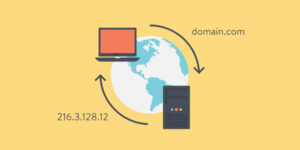
The Covid-19 pandemic has created a digital pandemic of its own. The 45% increase in the use of cloud computing solutions in the US came along with a 605% increase in cyber threats during Q2 of 2020, following a similar 630% increase in Q1. What’s more, attacks on cloud service users have reached nearly 7.5 million, making them the primary target for malicious attackers. That’s why cloud cyber security is a Vital protection against these attacks.
The trends are clear: cyber attackers are looking to capitalize on the cloud security gaps that many companies are either unaware of or blatantly choose to ignore. I would bet that, just by asking around, you would find that most business leaders are not very confident about their cloud cybersecurity strategy (which is why so many prefer to outsource their cloud application development to experts who can take care of everything).
Either way, as the adoption of cloud computing solutions increases, your business needs to step up its cybersecurity game. This is what you can do to get started.
1. Get Your Access Restrictions In Order
Access restrictions are a huge part of cybersecurity, especially when you mix that with zero trust practices (more on that later). This is just another way of saying that a chain is only as strong as its weakest link. With proper access controls and restrictions in place, your entire cloud platform is instantly more secure.
To achieve this, many companies are turning their eyes towards cloud-native solutions like Privileged Access Management (PAM) and Identity Access Management (IAM), both of which are designed to efficiently manage access to sensitive data. What makes these two methods so great is, quite simply, the enforcing of multifactor authentication protocols that often come bundled up with time-limit associations. It might seem simple at first, but that’s enough to nullify 90% of cyber threats today.
2. Explore Data Encryption with User-Owned Keys
Encryption is a great way to protect data, there’s no doubt about that. After all, decrypting data without having access to the key is such a tedious and time-consuming task that most attackers will desist immediately. Believe it or not, decrypting a well-secure set of data can take from hundreds to millions of years, even using the most powerful computers available today.
However, ever since the popularization of multi-cloud environments, managing data encryption is proving to be almost as tedious for companies. You see, most cloud Integration Services providers create solutions (like PAM and IAM) specifically tuned to their platforms, which naturally means that most cloud encryption solutions won’t be compatible with each other.

Today, enterprise-level organizations are leading the change in the market by tackling data encryption in multi-cloud environments from a centralized point of view. In other words, they are doing so through the user. User-owned keys, also known as custom-managed keys, provide full account logging and audit capabilities while securing data across multiple cloud platforms. If you want to learn more, this article by Google Cloud takes a good look at what user-owned keys can do for your cloud infrastructure.
3. Be Proactive with Zero Trust
Let’s get back on zero trust. Before it was a thing for the world, companies took zero trust as an optional and kind of taxing solution that made systems way more secure than would ever need to be. That’s not the case anymore. Most enterprise-level organizations, if not all, have already zero trust protocols in place, and every day more companies of every size follow on.
As such, today zero trust is something you need to plan before implementing any type of cloud infrastructure project. Doing it as an “add-on” once you get everything running will just make it more difficult and more expensive to implement in the long run. In most cases, the “trust but verify” mindset is no longer applicable.
A suggestion? Always follow the zero trust motto “Never trust, always verify, enforce least privilege”. Not particularly catchy, I know, but I’m sure someone is working on that. In any case, you can always work with an IT consulting company to develop a custom solution for your company that checks every box in your needs list.
4. Take a Closer Look At Your Cloud Configuration Protocol
We all know that emergencies show up at the worst possible times. And you don’t want to have a cybersecurity emergency any day of your life. Luckily, you can avoid the grand majority of headaches by running your cloud platforms with the proper configuration. For most companies, the best alternative is to work with a specialized consultant who can help them set a crystal clear protocol to identify, isolate, and correct any errors in their cloud infrastructure.
This process should cover everything from testing for unsecured settings to running simulated attacks at seemingly secured ports. The purpose of this is to find the weakest link we constantly mention when talking about cloud cybersecurity, even if it means analyzing massive IT infrastructures. Eventually, this will guarantee the stability and general security of external and internal APIs
Of course, to do this successfully you will need to use proactive tools that can monitor and provide error data in real-time. After all, cloud configuration was never designed to be a simple process. Clearly, there is a reason why companies with the most advanced IT departments swear by proper cloud configuration.
Also see: What are Cloud Security Challenges and How to Overcome Them
Wrapping Up
In the end, the foundation of any secure cloud infrastructure will always rely on the terms we’ve discussed above. Zero Trust, Multifactor Authentication, and Privileged Access Management all play a major role in modern cloud computing. The internet just wouldn’t be a safe place without them. Learning about them and finding out how they can improve your business is something you’ll definitely want to take a closer look at.







Good post! We will be linking to this particularly great post on our site. Keep up the great writing